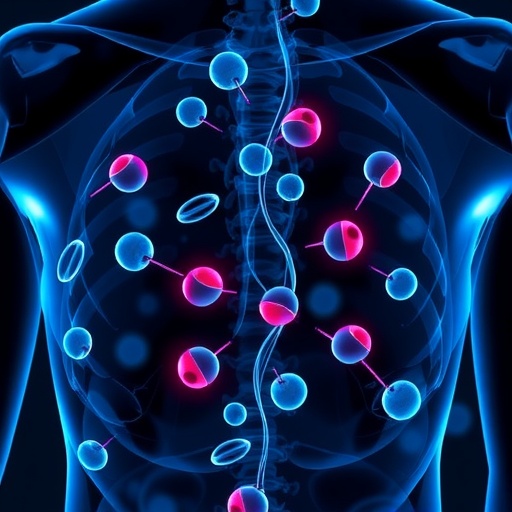
Credit: © InSysBio
Alzheimer's is a chronic neurodegenerative disease which leads to the senile cognitive impairment and memory loss. Every third person older than 70 years suffers from it. Such changes are caused by functional disorders and subsequent death of neurons. However triggers of processes resulting in brain cell death are still remain unknown. That's why there is no effective therapy for Alzheimer's disease.
At the moment, the most common hypothesis is a theory of the toxic effect of the beta-amyloid protein, which accumulates in the brain with age, aggregating into insoluble amyloid plaques. The presence of these plaques in the brain is the main marker of Alzheimer's disease (unfortunately, often found postmortem). Soluble (not aggregated into plaques) forms of the protein are considered to be toxic too.
All modern therapies act in one of the three ways: they can block production of soluble beta-amyloid, destruct protein before transformation into insoluble form, or to stimulate the plaque degradation. "Clinical trials for Alzheimer's therapies have got one significant feature – their short duration. They last for no more than 5 years, whereas the disease can progress for decades. And early Phase I-II tests last for only few weeks. With such experiment design one can affect only on the processes of distribution and degradation of the soluble beta-amyloid forms. Therefore we developed this part of our model to analyze and predict the dynamics of the new generation of drugs, for instance the inhibitors of amyloid production", says Tatiana Karelina , the head of the neurodegenerative disease modeling group, InSysBio LLC.
The first difficulty encountered by drug developers is the interpretation of the results obtained in animal tests. In general, most studies of the distribution of amyloid are carried out on mice: scientists inject a labeled protein into the mouse brain and observe the distribution of the radioactive label. Alternatively, the dynamics of amyloid in the presence of drugs is studied. Based on the data obtained, researchers can calculate the "therapeutic window" for the medication – a range of doses from the minimum effective to the maximum non-toxic. Then doses for human or monkey are calculated by using mass or volume scaling (for the body, the parameters change as many times as its mass or volume is greater than the mass or volume of the mouse).
The project team collected the data from the literature and derived a system of equations that fully described the existing results. Firstly the model was calibrated (i.e. the missing parameters were estimated) for the mouse, and then for the human and monkey. It turned out that one cannot use the scaling method to transfer results from rodents to primates (as it's often done). The deduced mathematical equations have shown that not only the rate of production of beta amyloid (as activity of corresponding genes) differs, but moreover the blood-brain barrier is different in rodents and higher primates. At the same time, there was no significant difference between the human and the monkey, and the standard scaling can be used to translate predictions between them.
The next big question in Alzheimer's clinical trials is how to understand if the drug affects specific target on the short term. It is impossible to observe the processes that occur in the human brain directly. Usually a cerebrospinal fluid probe is taken for analysis of the change in the concentration of beta-amyloid. Actually, these data strongly differ from the values of amyloid concentration in the brain, since the cerebrospinal fluid is strongly influenced by the processes taking place in the blood plasma, and amyloid demonstrates another dynamics.
"If there is such a big structural model calibrated on the big amount of data one can easily match the results of cerebrospinal fluid sample analysis with the real processes in the patient brain. This will greatly accelerate the development of new drugs and improve the accuracy of the therapy selection", explains Tatiana Karelina.
Scientists report that their model allows to predict how these new drugs must be administered. Total daily dose can be diminished but should be split for several parts during the day, providing optimal brain efficacy. InSysBio team is confident that the systems-pharmacological modeling can greatly improve the development of drugs from Alzheimer's disease and are already negotiating the introduction of technology with their partners in the pharmaceutical industry.
###
About InSysBio
InSysBio is one of the pioneers in quantitative system pharmacology (QSP) modeling and simulation and has been working on the market for more than 10 years. The company's aim is to assist right decisions on the critical stages of drug research and development. InSysBio team continuously improves methods and tools for biological modeling. Moreover, company supervises students and postgraduates forming professional community of QSP modelers. Company has published a lot of scientific studies in various therapeutic areas. Innovative approach applied by InSysBio has already become a part of the drug development process implemented by our strategic partners: nowadays there are more than 100 completed projects in collaboration with leaders of pharma industry.
Media Contact
Maria Maximova
[email protected]
7-963-632-3830
@insysbio
http://insysbio.ru/en
Original Source
http://insysbio.ru/en/news/170621 http://dx.doi.org/10.1002/psp4.12211
############
Story Source: Materials provided by Scienmag





